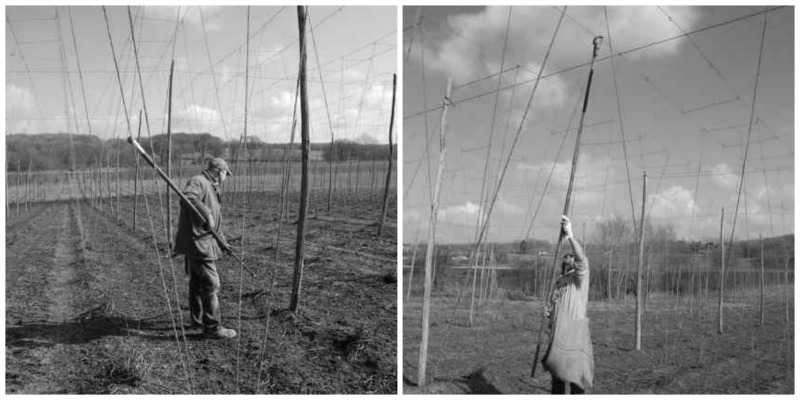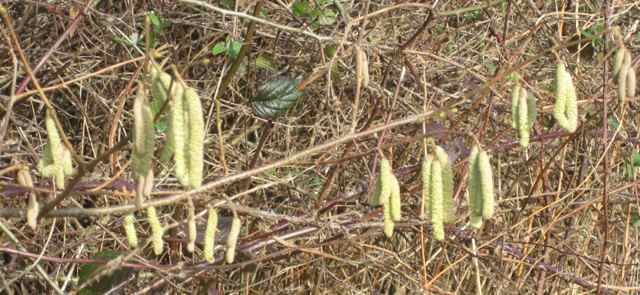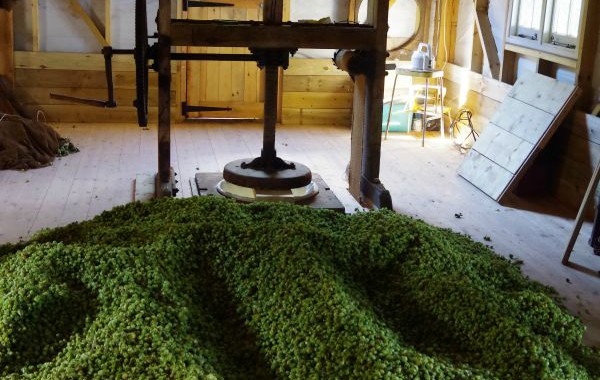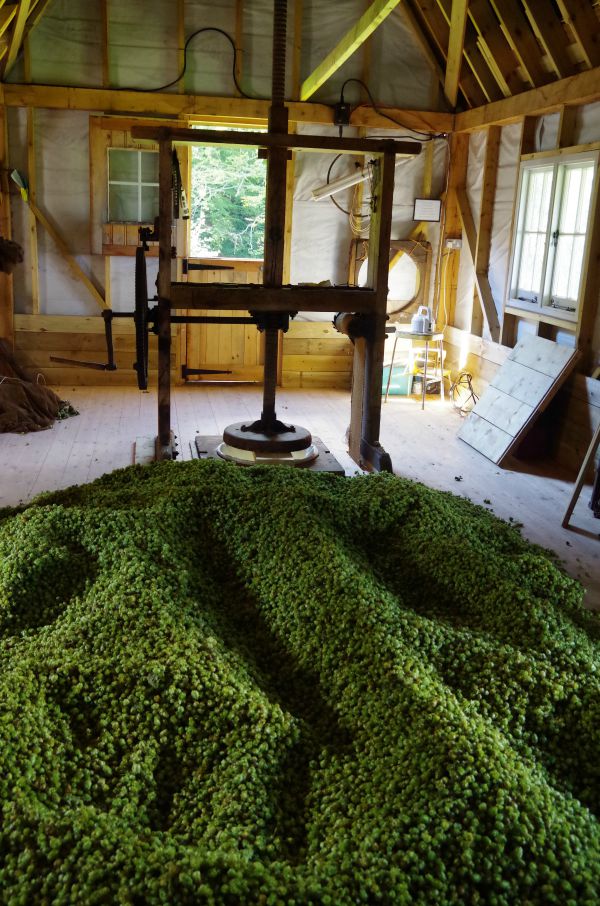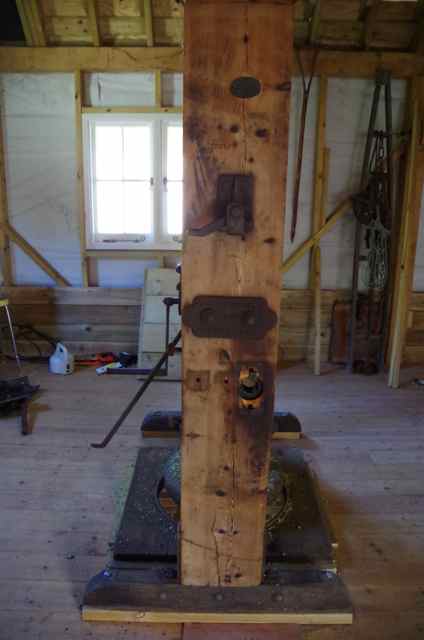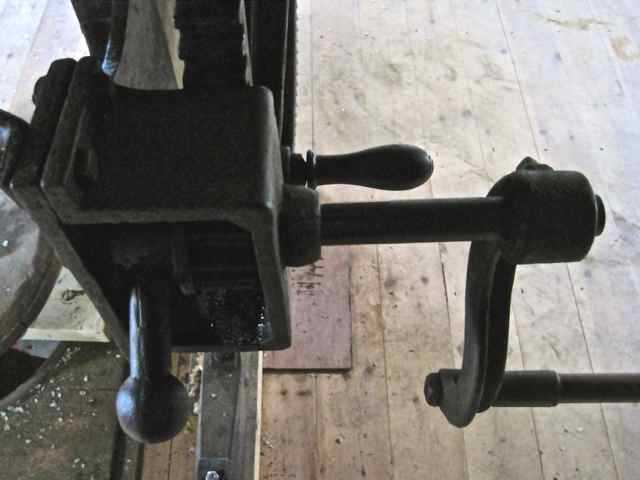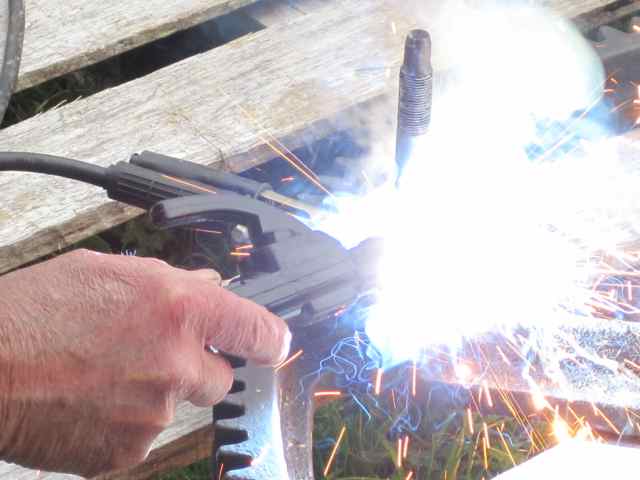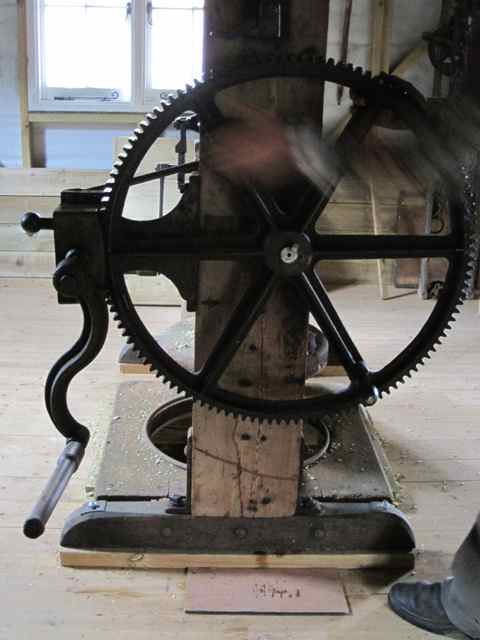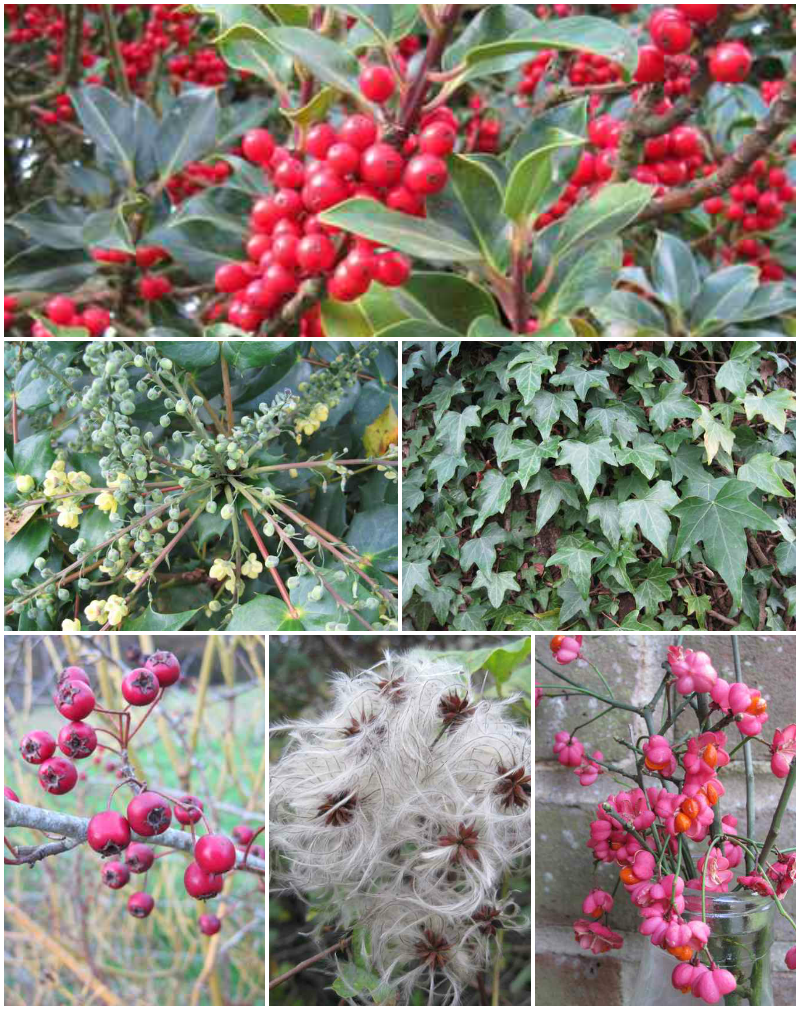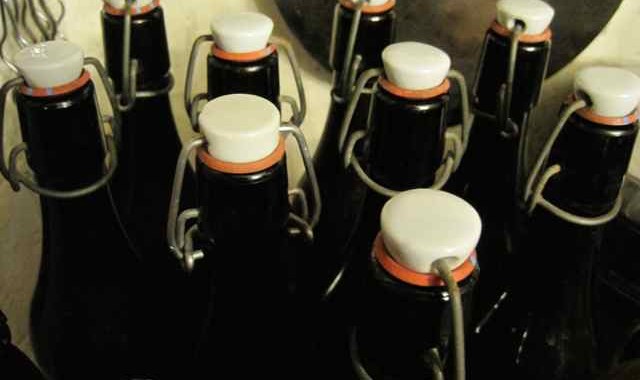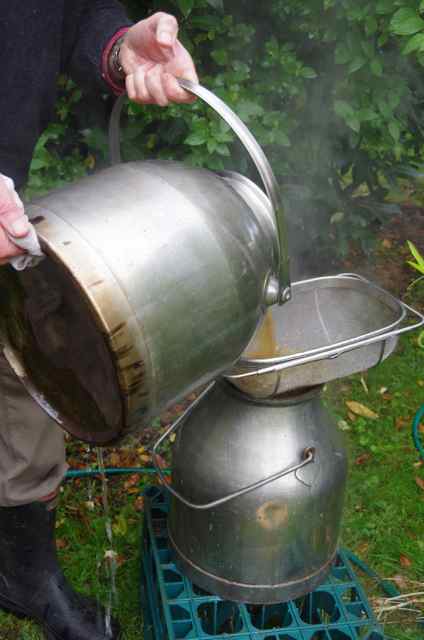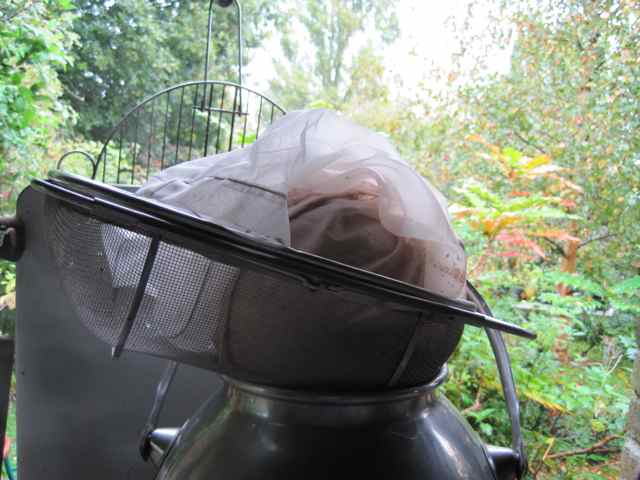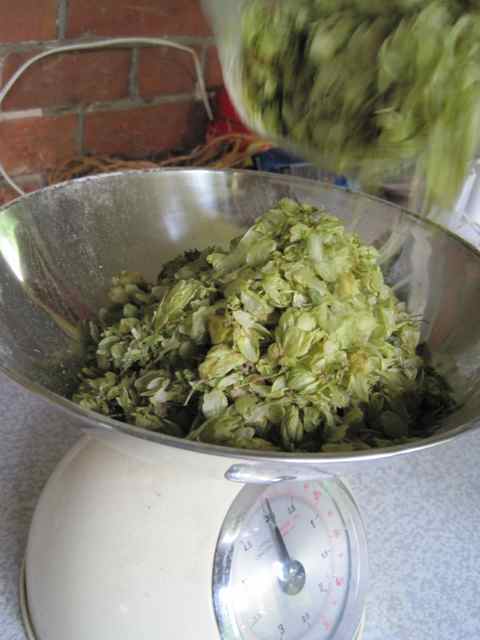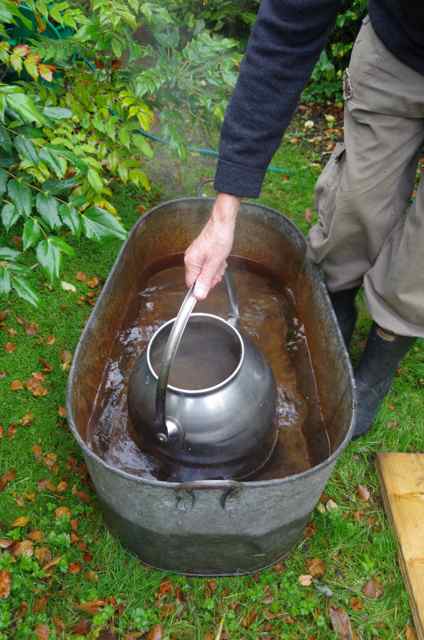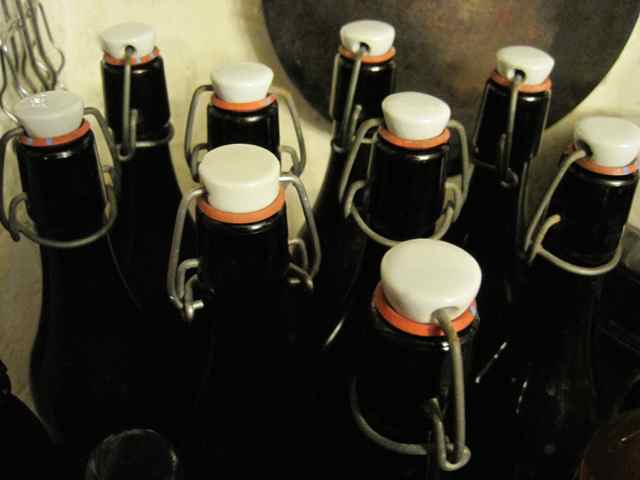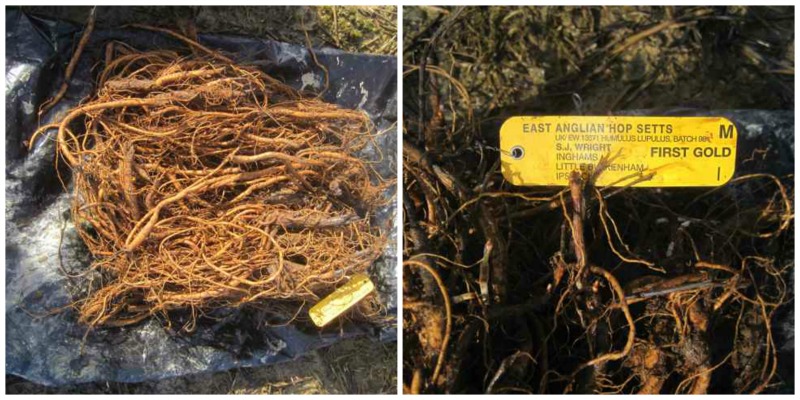 The First Gold hop variety which Ashley chose in the ‘Be A Hop Grower for a Season’ draw arrived earlier this week.
The First Gold hop variety which Ashley chose in the ‘Be A Hop Grower for a Season’ draw arrived earlier this week.
The laid back feel of the outdoor winter work for the hop grower suddenly ended, stringing and banding are underway but with the delivery of the new hop setts, its all change and we are up on our starting blocks for the off. Growing hops should come with an Official Government Health Warning, it can be addictive. Ashley you have been warned! That withstanding I really hope you enjoy our year ahead and the end product.
Yesterday 11th February was a beautiful February day, an early ground frost then the sun shone, a perfect day to be outside to start planting hop setts – my friend and I even got our jackets off. The soft golden sunshine of February to plant out the First Gold hops was very apt, golden light on these First gold hop setts felt like a good omen.



All the hop setts arrived in perfect condition. Thank you to Stephen Wright who always produces such wonderful quality setts.
The First Gold hop setts were planted out second as that was the space I had chosen for them, leaving the Northern Brewer hops needing to be planted first. Ideally of course the ground could have been drier, but although very sticky on top, it was not too bad once underneath that first yukky layer. Wealden clay makes it easy at times to think wistfully of the lighter Suffolk soil where these hop setts were grown – we are either soggy or like concrete with only brief windows of ‘just right’ in between these extremes!
The other varieties being planted this year are Chinook hops and Bullion hops. Four very different hop varieties to brew with, seemingly different looking setts and probably four very different varieties with their own quirks to test a hop grower. Growing hops is never boring.
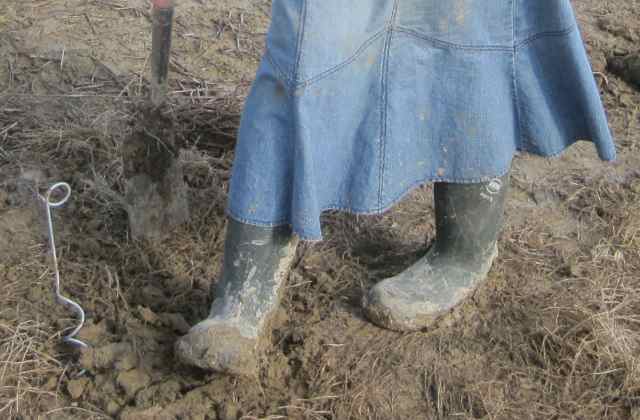

We are doing a trial run for a slightly different style of design for this new hop garden, it requires a different layout for the hop hills when planting. It remains to be seen how successful ( or not! ) this will be but unless you try you don’t know. However it has also meant working out a new hop stringing configuration, which we have nicknamed the Sussex Zig Zag. A plus for this Zig Zag method of growing hops is that it allows plenty of air around the growing bines. In hop gardens strung using the Umbrella method of stringing, the plants are set out at 6’6”, a coincidence that is exactly 2 metres in today’s metric language. Growing hops on the Zig Zag design each hill is planted alternately with 3’3” spacing up a line. But because they are planted alternately either side of the centre line each plant is at least 6’6” from it’s neighbour. The screw pegs are laid out to mark the planting positions for the hop setts and will stay there permanently ready for stringing.
Hopefully this sketch will this make clearer.




However, for a hop grower I am not the fastest planter, I confess to rescuing earthworms as I see them, then placing them back on the soft soil afterwards. I know I am not alone in being unable to knowingly chop a worm in two. On the radio I once heard a remark by someone who said “I could never be friends with someone who deliberately trod on an earthworm” Hear hear to that. But I do love to be hands on and feel the soil. It’s satisfying to see each hop sett nestled in with just the buds showing. It is important not to plant them too deeply. The Northern Brewer hop variety and First Gold hop setts were all planted, then spot on cue last night we had heavy rain to settle them in.
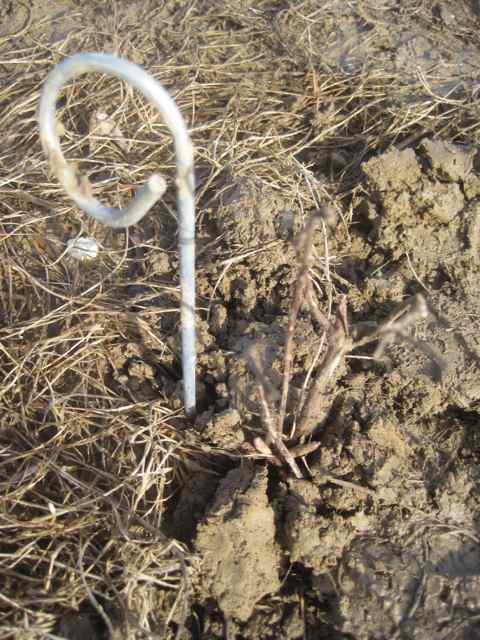

A First Gold hop sett planted with buds just showing



